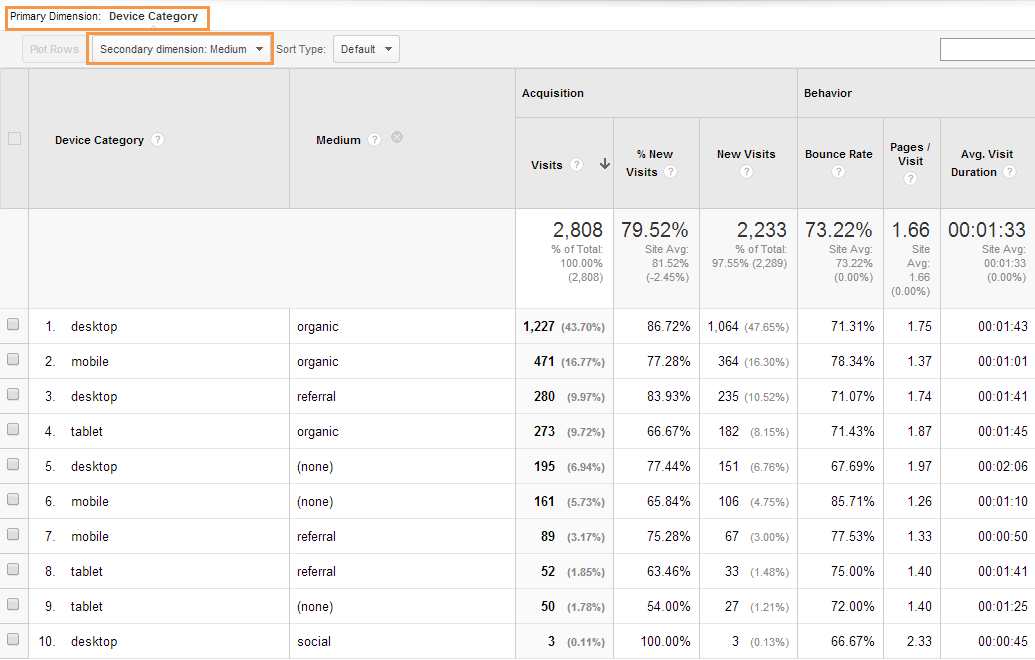Improving Data Precision: Google Analytics Secondary Dimension Insights
Improving Data Precision: Google Analytics Secondary Dimension Insights
Blog Article
Unlocking the Power of Second Dimension Analytics for Boosted Information Insights and Decision-Making
In the realm of information analytics, main dimensions usually take the spotlight, however the real depth of understandings lies within the world of additional measurements. By using the power of additional measurement analytics, organizations can unveil concealed fads, discover relationships, and remove a lot more purposeful final thoughts from their information.
Value of Additional Measurements
Checking out the value of secondary dimensions in analytics introduces the hidden layers of information insights vital for notified decision-making in numerous domain names. Second measurements offer a much deeper understanding of key data by providing added context and perspectives. By including second measurements right into analytics, organizations can extract much more nuanced and comprehensive insights from their datasets.
One trick value of second measurements is their capacity to sector and categorize key information, enabling an extra thorough evaluation of details subsets within a dataset. When looking at the information as a whole, this division makes it possible for organizations to recognize patterns, fads, and outliers that might not be evident. Furthermore, additional dimensions assist in discovering correlations and dependencies between various variables, resulting in even more exact projecting and predictive modeling.
In addition, additional dimensions play an important function in improving data visualization and reporting. By including additional dimensions to visualizations, such as graphs or graphes, experts can produce more insightful and informative depictions of information, assisting in far better communication of searchings for to stakeholders. Generally, the assimilation of additional dimensions in analytics is critical in unlocking the full potential of data and driving evidence-based decision-making.
Secret Advantages of Making Use Of Secondary Measurements
Utilizing additional measurements in analytics supplies organizations a calculated advantage by increasing the depth and granularity of data insights. By exploring data using secondary measurements such as time, location, gadget kind, or customer demographics, companies can discover patterns, fads, and connections that may or else stay covert.
Furthermore, the use of second measurements improves the context in which key information is translated. It provides an extra comprehensive sight of the partnerships between different variables, enabling companies to make educated choices based upon a more holistic understanding of their information. Furthermore, secondary dimensions promote the identification of outliers, abnormalities, and areas for optimization, ultimately leading to extra reliable approaches and improved results. By leveraging second dimensions in analytics, companies can harness the full capacity of their information to drive better decision-making and achieve their organization objectives.
Advanced Data Evaluation Strategies
A deep dive into sophisticated information evaluation methods exposes sophisticated methods for drawing out beneficial insights from complex datasets. One such technique is artificial intelligence, where algorithms are used to determine patterns within data, forecast outcomes, and make data-driven choices. This approach permits for the automation of analytical model structure, allowing the handling of large quantities of information at a quicker speed than standard methods.
An additional advanced technique is anticipating analytics, which uses statistical formulas and artificial intelligence strategies to forecast future results based on historical information. By assessing trends and patterns, organizations can anticipate client habits, market trends, and prospective risks, empowering them to make proactive decisions.
In addition, text mining and belief evaluation are valuable techniques for drawing out insights from unstructured information resources such as social media sites comments, customer testimonials, and study responses. By analyzing message information, companies can understand customer opinions, determine emerging trends, and enhance their items or solutions based on feedback.
Enhancing Decision-Making Via Second Dimensions

Enhancing decision-making with additional dimensions allows organizations to make more notified and targeted strategic choices. For instance, by segmenting customer information based on second measurements like acquiring background or involvement degrees, firms can tailor their marketing techniques to certain audience sections, bring about boosted conversion prices and client satisfaction. In addition, secondary dimensions can help identify relationships and relationships in between different variables, making it possible for companies to make data-driven choices that drive development and profitability.
Implementing Second Dimension Analytics
When including secondary measurements in analytics, companies can open deeper understandings that drive tactical decision-making and boost general performance. Applying second dimension analytics needs an organized technique to this link ensure efficient use of this powerful device. The first step is to identify the crucial metrics and site measurements that straighten with the organization's tactical objectives. This involves recognizing the certain questions the organization looks for to address and the data points required to resolve them.

In addition, companies need to take advantage of advanced analytics devices and technologies to improve the process of integrating additional measurements. These devices can automate data handling, analysis, and visualization, enabling organizations to concentrate on interpreting understandings instead of hand-operated information manipulation.
Conclusion
In verdict, additional dimension analytics play a crucial duty in boosting information insights and decision-making procedures. By using innovative data evaluation strategies and executing secondary measurements effectively, companies can unlock the power of their data to drive tactical business decisions.
In the world of information analytics, key dimensions usually take the limelight, yet the real deepness of insights lies within the world of secondary dimensions.Making use of second measurements in analytics provides organizations a critical benefit by enhancing the depth and granularity of data understandings. By leveraging second measurements in analytics, companies can navigate to these guys harness the complete possibility of their information to drive far better decision-making and attain their organization purposes.
Applying information validation procedures and regular audits can help maintain information high quality and reliability.
By making use of innovative data evaluation techniques and executing additional measurements properly, companies can unlock the power of their information to drive critical service decisions.
Report this page